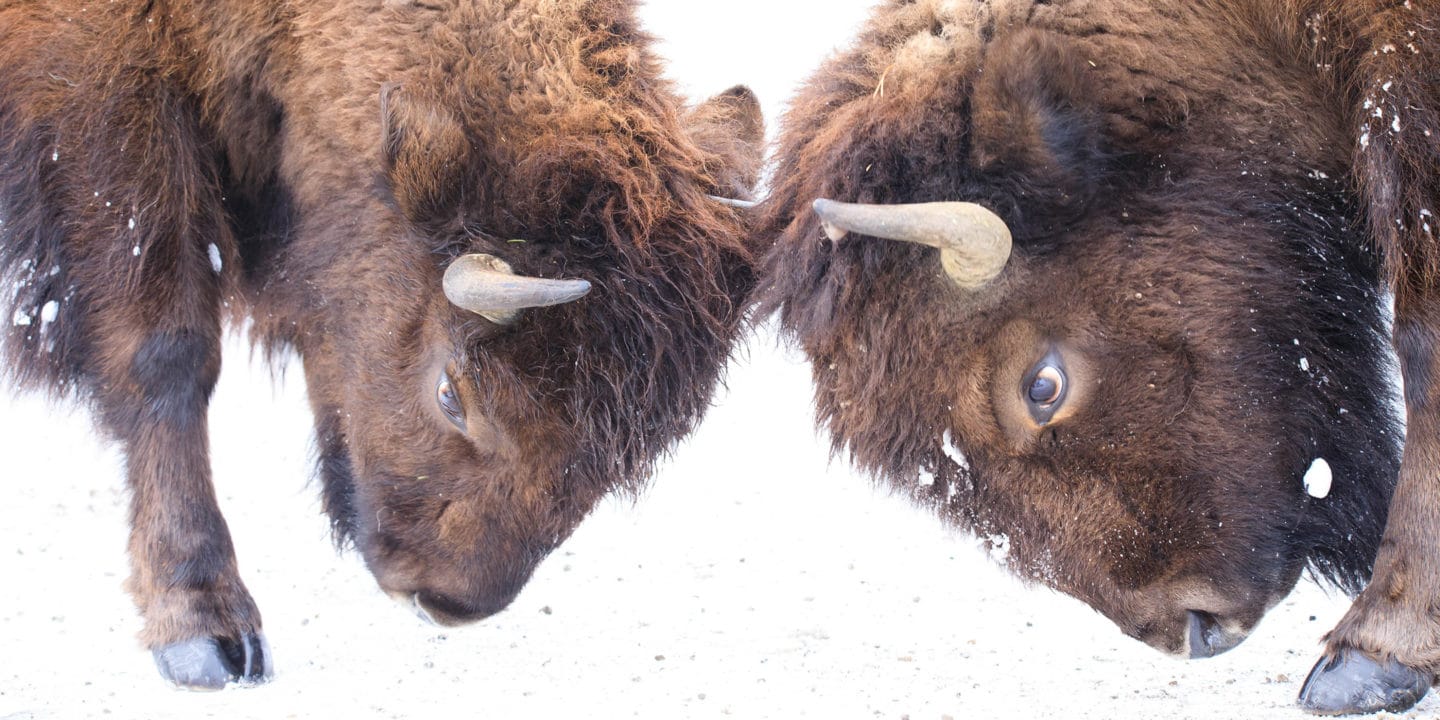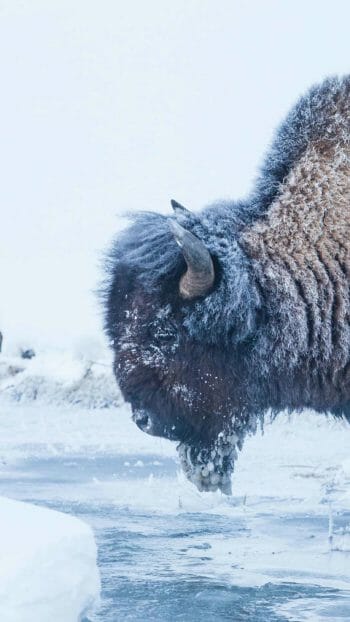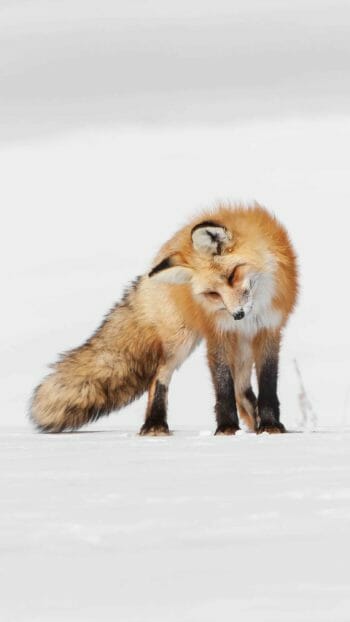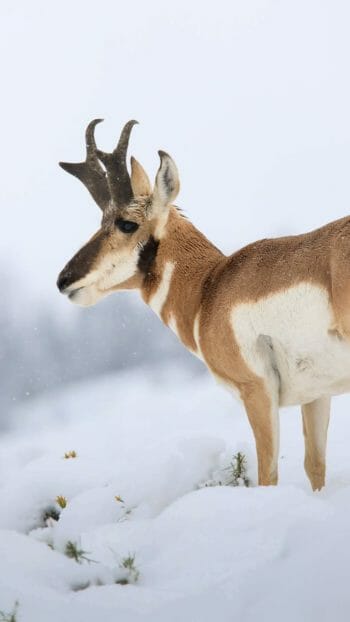Can I visit Yellowstone in the Winter?
Summer is certainly the timeframe most people visit Yellowstone National Park. The season conveniently corresponds with vacation for families, usually offers fairer weather, and accessing the entire park in a personal vehicle is possible. As November approaches, a dramatic transformation occurs- the days shorten, the temperatures drop, the chance of snow escalates, and eventually, over 200 miles of roadway in the park will close to regular vehicle traffic. Fortunately, this does not mean the entire park is inaccessible. The very roads that were tragically washed out by the flooding of this past Summer of 2022, resulting in the North and Northeast entrance being closed for nearly five months, have been dutifully repaired or rerouted to make sure the northern range of Yellowstone will be welcoming visitors for this winter season! The route between Gardiner, MT and Silvergate, MT remains open year-round; this incredible drive will take you by the novel travertine terraces of Mammoth Hot Springs, through the iconic Lamar Valley, and eventually to the foothills of the steep beauty that is the Beartooth Mountain Range. Aside from the scenery, this park region is also rich with wildlife, even during the winter months, so you can get your fill of geothermal features, views, and the opportunity to observe the glorious fauna that Yellowstone is known for. On top of all that, you have the chance to experience the park during a much more tranquil period considering a smaller percentage of visitors come during Winter.
What is the best way to see Yellowstone in the winter?
The passage between the North and Northeast entrance of Yellowstone is open to the public, so if you wish to drive through on your own, that is absolutely an option. The factors to consider when transporting yourself during this time of year are slick, icy/snowy roads, driving through blizzards, and potentially having to utilize tire chains or a shovel to dig your vehicle out of a deep patch of snow. If the challenge of winter travel is a stress factor that might disrupt the joy of visiting Yellowstone, consider having an experienced guiding service help! Not only is there the benefit of not having to drive yourself around the park, but a guide will also be able to take you directly to the highlights of northern Yellowstone, allowing you to maximize your experience in the park.
The Yellowstone Safari Company offers a crew of highly experienced, knowledgeable guides to help you enjoy Yellowstone National Park to its fullest in winter. There are a variety of trips to choose from when orchestrating your adventure to the area. The combination of a professional guide, a local company, and the option to pick just the right kind of tour for you will allow the experience to be customized to your personal interests and objectives when braving the chilly season of the Greater Yellowstone Ecosystem.
A choice of vehicle-based tours, including a full-day Yellowstone Winter Wildlife Safari (8-10 hours), are available. This single-day adventure will include seeing the uniquely beautiful Mammoth Hot Springs and venturing into the Lamar Valley, where wildlife watching is often the prime attraction. With snow-laden terrain, species like bison, elk, and even the elusive gray wolf stand out prominently against the white backdrop. If you would like to immerse yourself in this wild wonderland for more than one day, consider a two or 3-day Winter Wolves and Wildlife Safari. More time spent exploring this landscape will increase your chances of observing a greater variety of wildlife and terrain and the opportunity to learn even more about the ecology, history, and value of the world’s first National Park from your personal guide.
If you are seeking an opportunity to get outdoors more, the Yellowstone Safari Company has you covered! Just because it’s cold outside doesn’t mean you have to stay inside, and just because there is snow on the ground doesn’t mean you can’t trek through the wild and wonderful natural spaces around Yellowstone National Park. With the innovative technology of snowshoes, plenty of territory is accessible for an adventurous day of snowshoeing! The Yellowstone Safari Company offers morning or afternoon 4-hour Snowshoe Safari around the lovely Big Sky, MT area. This whole day trip will include snacks, lunch, and even better- hot cocoa or coffee! Accessing the park via the Gallatin River Canyon allows for opportunities to seek out wildlife and enjoy the blissful peace of the winter scene. But don’t let the idea of an 8-10 hour Snowshoe Safari intimidate you; there is so much to explore around the Greater Yellowstone Ecosystem, and the more time you can invest, the more you will get out of the experience.
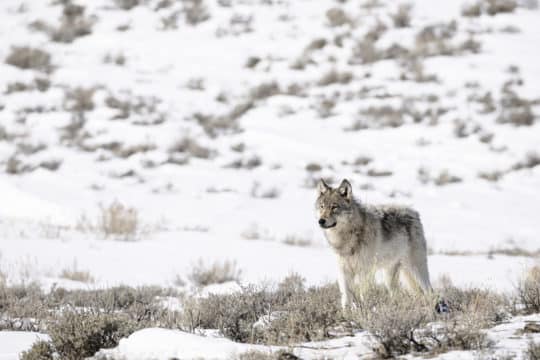
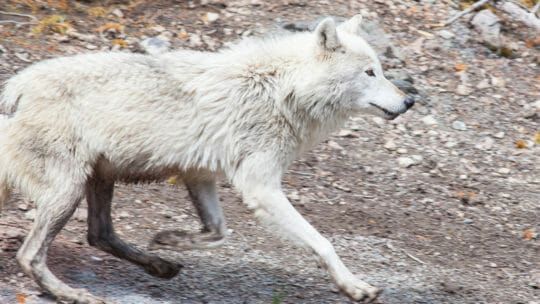
Is there wildlife around Yellowstone in the Winter?
A common misconception about Winter around Yellowstone National Park is that there is little to no wildlife to be found. While megafauna like black and grizzly bears will both retreat into their hibernation dens around November/December, a plethora of other animals remain active. Celebrated large mammals like bison and elk will be busy pursuing survival in this extreme climate by migrating into lower elevations where less snow will obstruct their ability to access foraging. Some elk herds might even be seen roving around the sidewalks and parking lots of the Mammoth Hot Springs area. Unique species like the bighorn sheep and mountain goat will also be drawn to lower elevations, increasing the chances of spotting them in places like the Lamar Valley and near Big Sky, MT (though often at distances, making the binoculars and spotting scopes provided by the Yellowstone Safari Company all the more vital).
Then there are the wolves. Winter is one of the prime times to visit Yellowstone for wolf-watching. A combination of factors makes the chilliest season one of the best to view these amazing apex predators in action. Tremendously cold temperatures, blizzards, and limited resources make Winter an extreme survival period, so finding food is essential to any wild animal’s livelihood. Thus, prey species such as the elk being densely populated in lower valley floors throughout the northern Yellowstone region make wolf hotspots all the more prominent. The snow-blanketed terrain adds another advantage in seeking out this large canine. The summer scene is covered in natural shades of green, tan, and dark umber, along with 2-3 foot in height sagebrush and patches of tall grasses. This combination makes spotting a wolf very challenging, as the vegetation easily camouflages them. This is why Winter’s ivory backdrop makes nearly any animal more apparent as it moves or lounges on the landscape.
While Winter offers the incredible opportunity to see many of the large mammalian species native to the Greater Yellowstone Ecosystem, it is always vital to keep in mind these are wild animals that are not always going to cooperate with those who are looking for them. Wolves specifically can travel upwards of 30 miles in a day when hunting for food or patrolling their territorial boundaries, which makes witnessing such life forms in their natural habitat so phenomenal.
There is a place in the Greater Yellowstone Ecosystem where wildlife can be guaranteed, however- the Wolf and Grizzly Discovery Center of West Yellowstone, MT! This not-for-profit education facility hosts seven grizzly bears, which the center adopted under circumstances where they were either nuisance or orphaned bears that would have otherwise been euthanized. Now they live in captivity and can help visitors enjoy the chance to see bears year-round and learn more about the species’ natural history and the conservation efforts being made to protect them. There are also gray wolves, river otters, eagles, owls, and native fish species that can be seen! The Yellowstone Safari Company has a partnership with the Wolf and Grizzly Discovery Center and offers a Big Sky Wilderness and Wildlife Adventure tour. This trip gives you a full-day experience in which you can start off snowshoeing in the wildlands of Montana with one of our professional guides and then visit West Yellowstone, MT, to enjoy lunch at a local restaurant and see the wonderful discovery center.
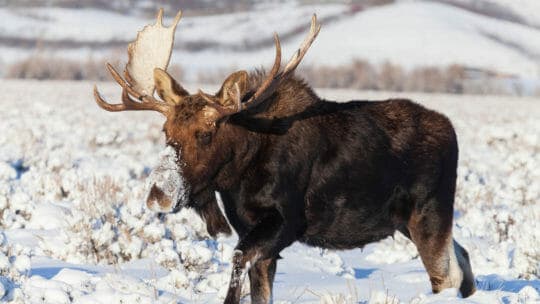
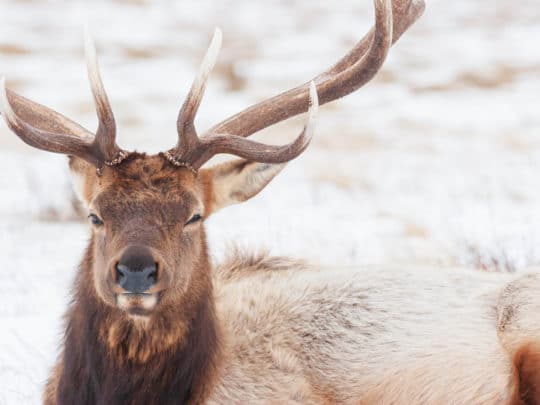
How do I get to northern Yellowstone in Winter?
Just an hour from the North entrance of Yellowstone National Park is Bozeman, Montana. In western standards, this city has over 50,000 residents and its own regional airport. Outside of finding transportation to and from the airport and around the city, you potentially would not even need to rent a vehicle if your prime goal is to visit the park. Whether you are staying in Big Sky, Bozeman, Livingston, or Gardiner, MT, the Yellowstone Safari Company can take care of ferrying you throughout the national park, whether that be for a snowshoeing/cross-country skiing adventure or a wildlife searching excursion.
The Bozeman Yellowstone International Airport (BZN) offers commercial flights through popular airlines like United, Southwest, American, and Delta. While this can change annually, airports in metropolitan areas such as San Francisco, CA; Los Angeles, CA; Salt Lake City, UT; Las Vegas, NV; Denver, CO; Dallas/Fort Worth, TX and Chicago, IL might even have the opportunity to book direct flights to BZN that are available daily during the winter season.
As stated, the route between the North and Northeast entrances of Yellowstone National Park remains open year-round- so you can navigate the park independently. But if you need a break from driving and are interested in learning as much as possible about the natural history, biology, and geology of the area as well as increase your chances of spotting wildlife like elk, bison, bighorn sheep, wolves, and more- consider letting an expert guide from the Yellowstone Safari Company help you make the most of your visit! Those experienced enough to travel by vehicle during the snowy season can also drive into the area themselves.
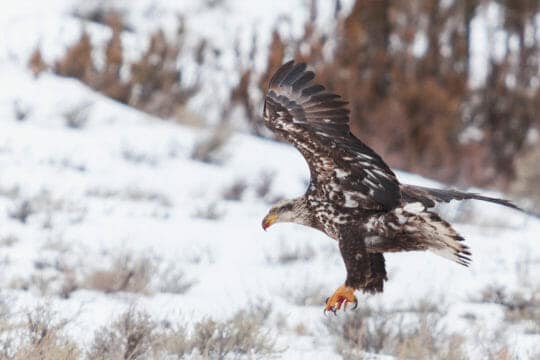
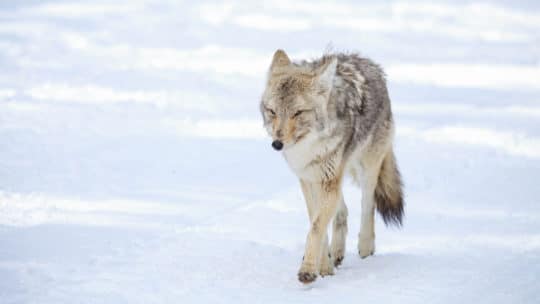
What gear do I need to visit Yellowstone in Winter?
If you do not have much experience dressing for near-arctic conditions, here are some recommended items to pack for your winter visit to Yellowstone:
- When it comes to jackets, there are three integral layers to consider- the fleece, the insulation, and the water/windproof shell. A fleece jacket or sweater should be worn closest to the skin to provide a soft layer of immediate warmth. Over the top of this, an insulated coat often dubbed the “puffy.” This could be a parka with feather down or synthetic filling that will aid in trapping the heat escaping your body so you can keep yourself toasty when temperatures are potentially well below freezing. Snow and wind are highly likely when visiting Yellowstone during this time of year, so you will want an exterior layer that will keep you dry and keep out the draft. Rain jackets paired with the warm layers mentioned prior can do just the job! However, a variety of winter coats are designed specifically for such conditions.
- Don’t forget about your legs! While keeping your core warm is vital, keeping your lower half covered for comfort is just as important. Wearing fleece-lined pants or thermal underwear can get the job done, depending on your activities. However, if you plan to be trekking through snow on a snowshoeing adventure or perhaps even to get a better view of an animal, consider donning (or at least bringing) a pair of snow pants. Not only are they snowproof and insulated, but they will also protect from windy conditions.
- Boots. An excellent selection of winter boots is available that will be suitable for navigating Yellowstone National Park. Ensure they are insulated, waterproof and comfortable- especially if you are snowshoeing with them. Snow accumulation in the park is significant, so investing in boots above the ankle is not a bad idea to help keep snow from getting in. Gaiters are another option to help protect your socks from getting soaked when venturing around this winter wonderland.
- Whether it be the hood of your jacket or a cozy beanie, make sure you’ve got some form of head protection! Not only will this keep you more comfortable, but it could also save your ears from frostbite.
- Insulated gloves or mittens are another essential item in selecting your winter attire. Nothing is worse than frozen fingers; frostbite is another potential risk for those extremities.
- Some additional items to consider that might make your visit to Yellowstone National Park in winter more enjoyable are: Hot Hands (also known as hand warmers, these will automatically heat up when taken out of the packaging and are great for not only your hands but toes as well!), a scarf or some form of face covering, a traction device to put on the bottom of your boots to prevent slipping on ice (YakTrax is a great brand to consider) and sunglasses! With the entire landscape blanketed in beautiful white snow, admiring the views can be blinding without eye protection.

